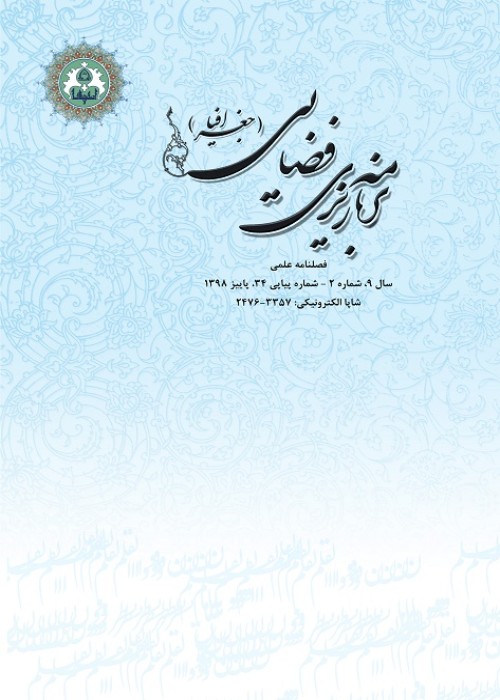Application of Environmental Technologies in the Creation of the Pavement of the Sponge Eco-City (Case Study: Shiraz City)
Overexploitation of natural resources and the environment during urban development has led to numerous environmental challenges in cities. This study aimed to identify the key criteria for establishing sponge eco-city pavements using environmental technologies and assess the importance and performance of these criteria in Shiraz. The research adopted an applied approach and utilized a descriptive survey method to analyze the importance-performance of environmental technology components in sponge eco-city pavements. Initially, a Delphi study was conducted, involving 30 expert panel members selected through a snowball sampling method. Following multiple sessions, the criteria with the highest scores were identified through an importance-performance analysis. The findings revealed that permeability and cost-effectiveness were the most and least important criteria with values of 3.78 and 3.30, respectively. In terms of performance, load bearing capacity and water storage capacity scored the highest and lowest with values of 3.16 and 3.04, respectively. The importance-performance matrix positioned permeability and water storage capacity in the 1st quarter, stability and load bearing capacity in the 2nd quarter, strengthening the underground ecosystem in the 3rd quarter, and affordability in the 4th quarter. Ultimately, the study emphasized the prioritization of permeability and water storage capacity, which held the highest weights of 2.646 and 2.442, respectively. thus, they should receive primary attention in the development of pavements in Shiraz.
Rapid urbanization, unplanned urban development, and recent climate changes have had detrimental effects on human settlements and the environment. Consequently, adoption of environmental technologies to achieve a balance between environmental protection and mitigation of the adverse impacts of development has gained significant global importance in creating sustainable societies. In response to water challenges and environmental degradation, the concept of the sponge eco-city initially proposed in China holds promise in addressing environmental issues, enhancing human well-being, fostering growth and development, and achieving sustainability within communities. The sponge eco-city emphasizes the integration of environmental considerations into all physical structures within urban spaces, aiming to harmonize city development with the natural environment and advance the principle of sustainability by aligning human and ecological processes in urban settings. In light of this, the present research endeavored to analyze the importance-performance of fundamental environmental technology components in the pavements of the sponge city of Shiraz with an ecological approach.
This study focused on Shiraz, a prominent city in Iran and the capital of Fars Province. It was an applied research with a descriptive nature, employing a survey method through a questionnaire. The documentary section involved gathering theoretical data related to environmental biotechnology, urban ecological approach, sponge city, etc., from articles, books, statistical reports, and relevant documents. In the field section, a questionnaire was used to collect additional data. The Delphi panel comprised 30 experts, including professors specializing in urban planning and management, crisis management, natural resources, and urban environment. They were selected through the snowball sampling method. The identified criteria were presented to the expert panel. Following multiple sessions, the criteria with the highest scores were analyzed using the importance-performance analysis method.
The study revealed that the permeability component held the highest importance with a value of 3.78, while the cost-effectiveness component had the lowest importance at 3.30. Regarding performance, the load-bearing capacity component scored the highest at 3.16, whereas the water storage capacity component had the lowest score at 3.04. Additionally, the positioning of each component in the importance-performance matrix indicated that the components of permeability and water storage capacity were situated in the 1st quadrant, signifying high importance but low performance. This presented a significant weakness in Shiraz City system, necessitating immediate attention and implementation of improvement strategies. Sustainability and load-bearing capacity positioned in the 2nd quadrant demonstrated desirable performance in these areas and recommended maintaining and preserving this situation. The component of underground ecosystem enhancement fell in the 3rd quadrant, indicating low importance and low performance and suggesting a relatively negligible role in the system's efficiency and resilience. The component of cost-effectiveness placed in the 4th quadrant, represented nonessential strengths that could be better utilized by reallocating resources to strengthen other components. Ultimately, based on the weighted prioritization, permeability and water storage capacity with the highest values of respectively 2.646 and 2.442 had to be earnestly considered as fundamental priorities for improving the pavement system in Shiraz City.
The findings suggested that the pavements in Shiraz should be constructed or reconstructed based on the principles of sponge eco-city structures. This type of pavement allows rainwater to be stored in the lower layers during rainy days and released as water vapor on sunny days. Essentially, rainwater is stored in an underlying sand layer, creating favorable conditions for the growth of tree roots and microorganisms and leading to the decomposition of absorbed pollutants and enrichment of the ecological system with nutrients, thereby promoting flourishing and diversification of the underground ecosystem and urban biology. Permeable pavement presents a viable alternative to traditional impervious pavements, mitigating adverse environmental impacts across various city areas. Rapid urbanization and unplanned urban development in Shiraz have altered land use patterns, leading to conversion of land into urban construction, expansion of roads, increased impervious surfaces, loss of valuable environmental resources, diminished agricultural lands, reduced and polluted water resources, intensified heat island effect, habitat destruction, and decreased biodiversity. Consequently, decision-making institutions, planners, and urban managers in Shiraz should prioritize the sponge eco-city approach in future development plans as a necessity to address the myriad challenges of urbanization and achieve sustainable development goals.
- حق عضویت دریافتی صرف حمایت از نشریات عضو و نگهداری، تکمیل و توسعه مگیران میشود.
- پرداخت حق اشتراک و دانلود مقالات اجازه بازنشر آن در سایر رسانههای چاپی و دیجیتال را به کاربر نمیدهد.



